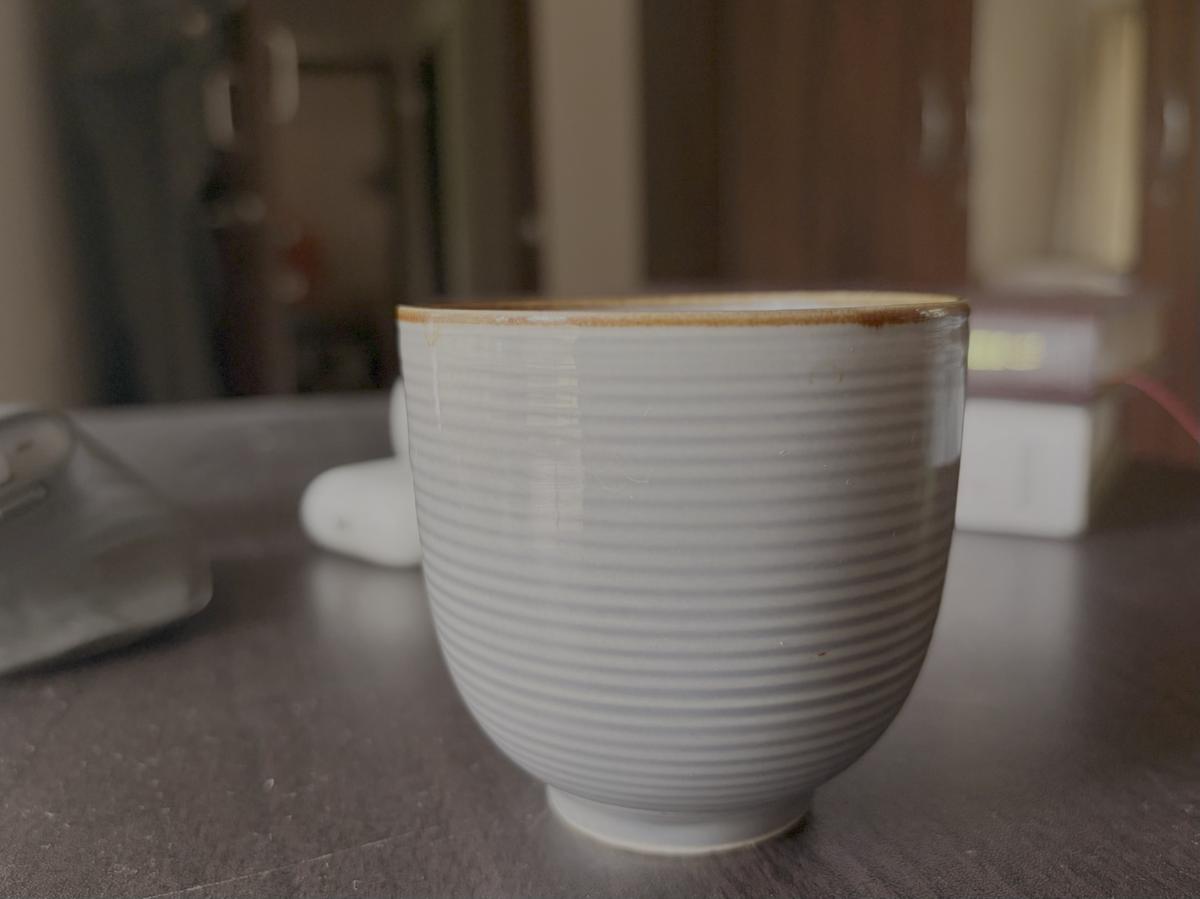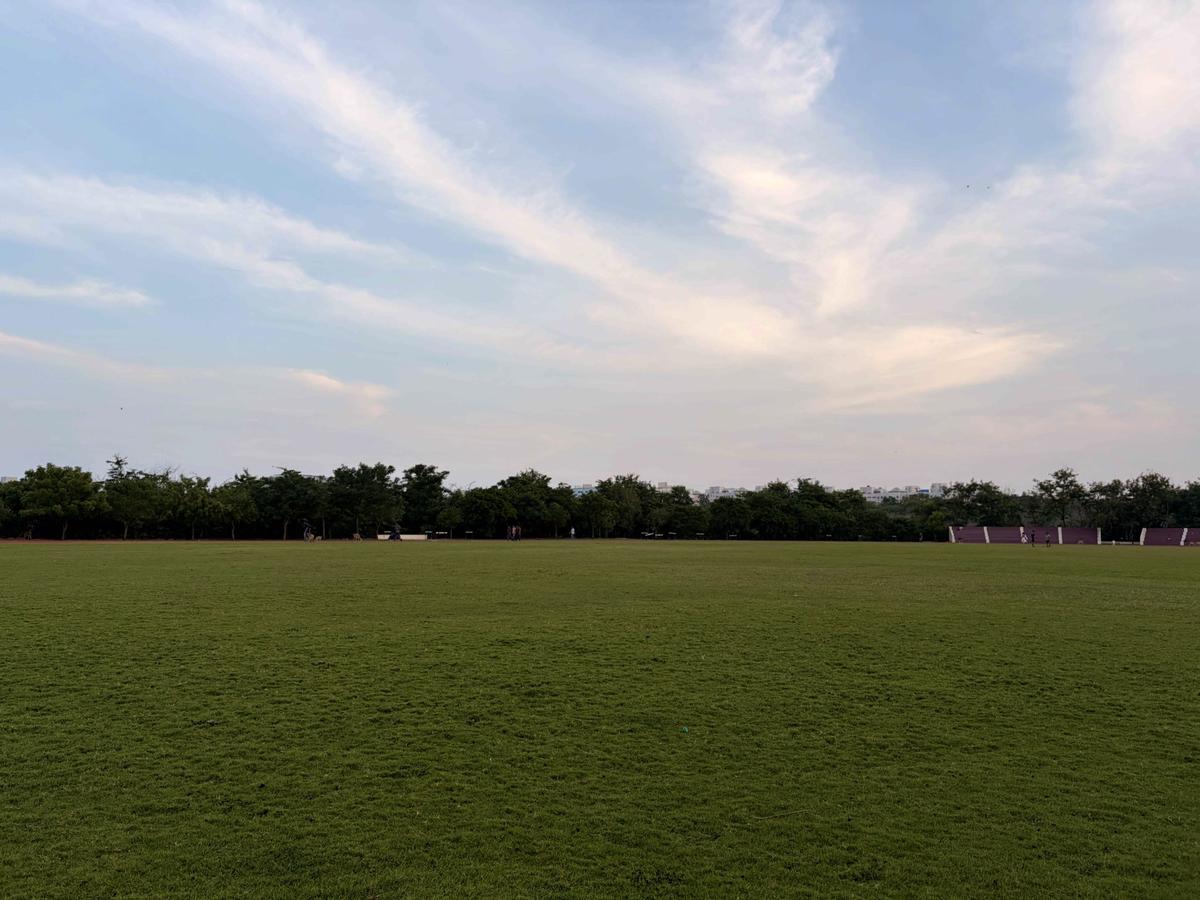[ad_1]
Apple’s iPhone Air is an ambitious reimagining of the iPhone, making it both special and controversial. I don’t mean to use the word ‘reimagining’ lightly here. For instance, consider this: Apple has not christened this device as the iPhone 17 Air, but the ‘iPhone Air’ — the first generation of Air in a smartphone form factor. I couldn’t help but reminisce how Steve Jobs unveiled the MacBook Air in 2008.
This phone, to a large extent, is a new paradigm in the world of Apple. At just 5.6mm thickness, the iPhone Air is impossibly thin and lightweight. In hand, it feels shockingly minimal: so thin you’ll keep checking your pocket to confirm it’s still there. Despite the paper-thin build, the device maintains an excellent balance and comfort, in large part thanks to glossy titanium sides that add a touch of grip and luxury.

Apple’s engineering lets you easily grab the phone from any surface without slippage, making the iPhone Air feel like you’re holding nothing but a screen. The finish, and colour options, exude an understated luxury. The buttons are thinner than ever while retaining their tactile quality.

The 6.5-inch ProMotion display, boasting a 120Hz refresh rate, stands out as a key feature
| Photo Credit:
John Xavier
One notable design change is the presence of a single speaker. While audio remains acceptable for everyday use, expect less loudness and clarity than the earlier generation Pro models.
Apple has also eliminated the physical SIM tray in favour of an eSIM. Transitioning is quick and easy for those already using eSim. You can switch right at the beginning when setting up your iPhone Air, or later, through the settings. But if you are switching from a physical sim you will have to wait for at least a day to get your text messaging support activated. So, I suggest making the switch after completing tasks that rely on one-time-passwords.
A bold internal rethinking
Apple’s internal rethinking pushes nearly all physical components to the camera bump up on top, leaving most of the body as battery. The titanium frame remains robust, and a simple screen protector suffices for scratch protection.

Gaming runs smoothly on the iPhone Air with only minor frame dips. The battery also holds up while gaming and the A19 Pro provides graphics on par with the iPhone 17 Pro Max, achieving near-console-quality rendering at the highest mobile settings
| Photo Credit:
John Xavier
The 6.5-inch ProMotion display, boasting a 120Hz refresh rate, stands out as a key feature. It delivers vibrant colours, exceptional brightness of 3,000 nits, and a cutting-edge anti-reflective coating that ensures flawless outdoor viewing. The always-on display seamlessly transitions to a 1Hz mode for battery conservation, while iOS 26’s “Liquid Glass” visuals are perfectly suited to the screen’s capabilities.
Trade-offs are clear: The iPhone Air features a single wide 48MP rear camera, the same sensor as the iPhone 17. Daytime photos and those shot in well-lit environments shine with beautiful colours and sharpness, low-light performance noticeably lags behind the multi-camera Pros.
Video recording is excellent with 4K 60fps, great stabilization, and dynamic range, but you lose out on optical zoom and ultra-wide possibilities. The lack of ultra-wide will be pronounced if you want to capture expansive scenes or test creative angles. But if you are someone who is not much into photography, the iPhone Air’s 48MP rear camera is good enough for most random shots.

Picture shot on iPhone Air’s main camera – f/1.6, 1/94 sec, ISO 50
| Photo Credit:
John Xavier
The front camera, meanwhile, gets praise for autofocus and a clever wide mode that lets users take landscape selfies while holding the phone vertically. Dual capture mode further enhances content production.

Picture shot on iPhone Air’s main camera — f/1.6, 1/60 sec, ISO 400,
| Photo Credit:
John Xavier
Is iPhone Air’s Pro performance hampered by smaller battery life?
Battery life emerges as a dividing line. When Apple claimed the iPhone Air comes with an ‘all-day battery’, I think they meant it literally. For instance, this phone will last you a day — from sunrise to sunset. For me, on a single charge, this phone lasted from 7:30 a.m. to 6 p.m. I used it as my primary phone with moderate multi-media use.

Picture shot on iPhone Air’s main camera – f/1.6, 1/404 sec, ISO 50
| Photo Credit:
John Xavier
If you are one of those heavy users, like content creators, video aficionados, gamers, or those coming from Pro Max models, the smaller battery may mean needing a midday top-up. Apple offers a matching slim Magsafe battery pack. Fast charging and iOS optimizations help, but endurance remains a step behind larger models.
Performance, powered by the A19 Pro chip, is outstanding. Everyday use, multitasking, and media editing. And even gaming runs smoothly with only minor frame dips. The battery also holds up while gaming — I lost about 5% charge after like ten minutes, and heating wasn’t an issue. The A19 Pro provides graphics on par with the iPhone 17 Pro Max, achieving near-console-quality rendering at the highest mobile settings.
Apple Intelligence and phone mirroring issue
I wasn’t sure where to bring this quirky issue into my review, so I’ll explain it here. While Siri set up was easy and the voice assistant was working fine, I felt like Apple Intelligence was missing in the iPhone Air. So, I searched for Apple’s hypocycloidal logo, and then clicked open Notes, Email and Pages apps to look for Writing Tools. But none of these apps had the writing tool support.
This seemed bizarre as roughly six gigabytes of phone storage was already taken up by Apple Intelligence, and now that feature is missing in action. Thinking this could be a ‘turn off or turn on’ issue, I checked whether Apple Intelligence was toggled on in the Settings app. And that’s when I noticed the absence of the Apple Intelligence switch in Settings.

Picture shot on iPhone Air’s main camera – f/1.6, 1/181 sec, ISO 125
| Photo Credit:
John Xavier
After trying several work arounds, including updating iOS 26 with the latest beta updates, I finally changed language and region settings. I had set up the device in India with English (India) language setting. I switched to UK region with English (UK) language setting. After switching, I restarted the device, and then opened Notes and Pages apps to check for Apple’s hypocycloid logo. And I finally found Writing Tools feature in these apps.
I expect Apple to fix this iOS 26 bug soon. For now, I’ve switched back to India region, and Apple Intelligence works fine.
Apart from the Apple Intelligence misadventure, I also faced connectivity issue when trying to phone mirror with my MacBook Air. When I tried to set it up, the device prompted that this support was not available.
Who should consider buying the iPhone Air?
So, after using this phone for about a week now, I’ve got to admit that this is not a device for a mainstream buyer or a power user. This is the iPhone for those who value design above all. This is a device for the minimalists, or anyone who wants a statement device that doesn’t weigh them down.
The form factor evokes style, and its finish draws admiring glances. One does have to sacrifice multi-camera photography, battery life, and stereo sound, but in return, they will gain an impossibly thin build, premium materials, and one of the most striking screens on any smartphone. And, no doubt, for some people, this device may bring back memories of iPhone users carrying around power banks to extend the device’s battery life. If you are a moderate user, then I don’t think battery should be a huge concern.
The iPhone Air is a bold attempt by Apple that showcases future possibilities where less can truly be more. If you prize design, portability, and display quality over technical abundance, this phone excels. But if your workflow demands all-day battery, multi-lens versatility, or pro audio, you may be better served by the more conventional iPhone 17 or the Pro. The Air is about admiration, and for those Apple diehards this device is aimed at, the trade-offs may feel entirely worth it.
[ad_2]
Source link

